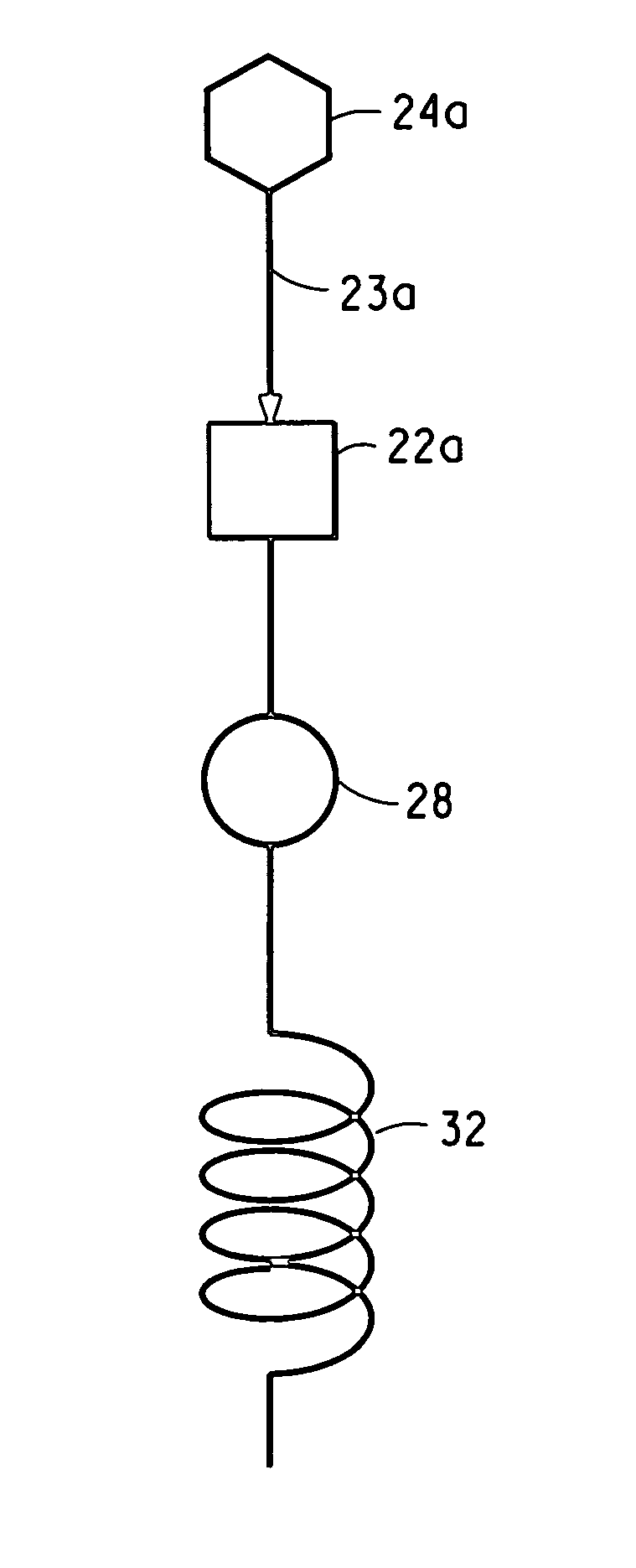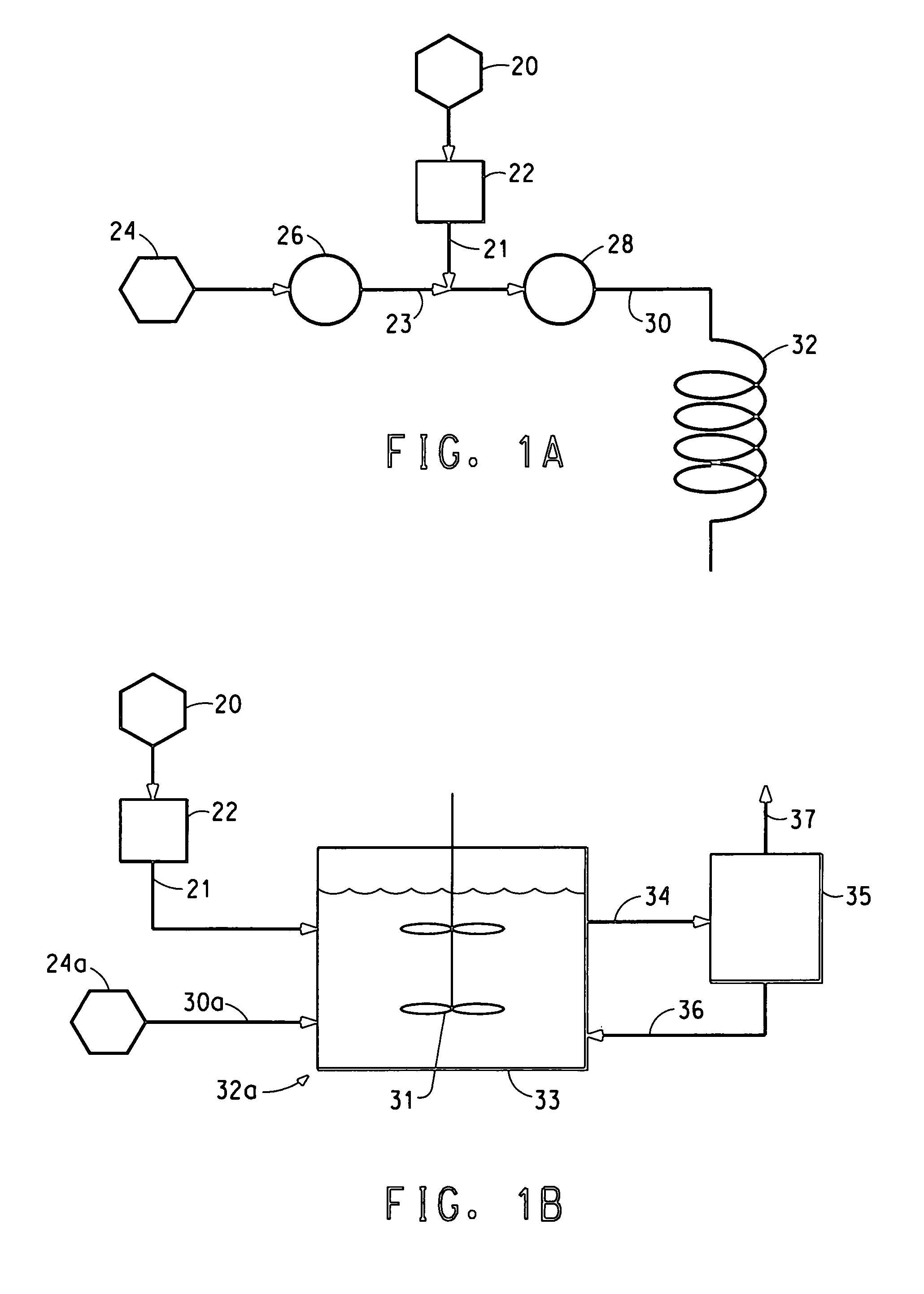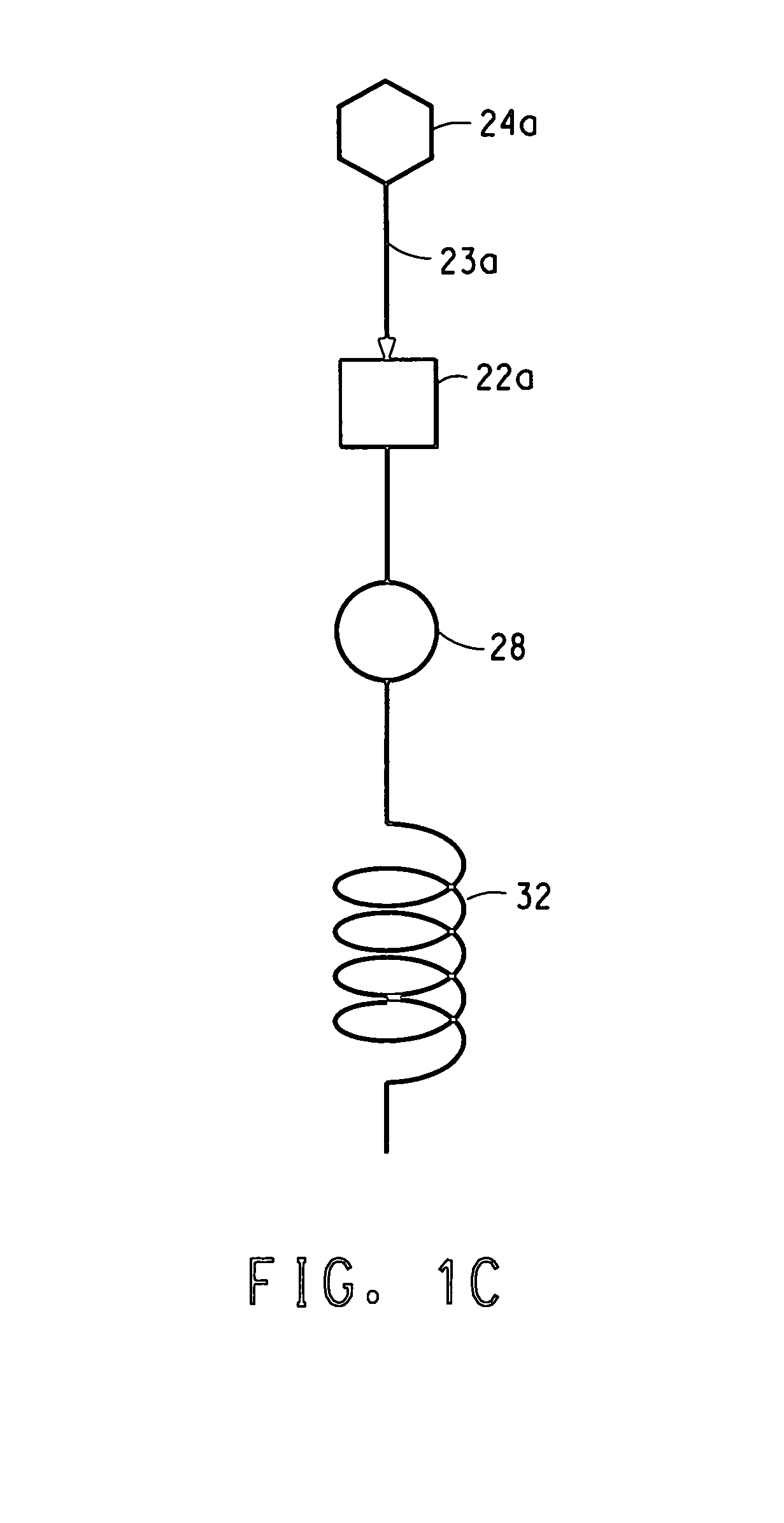Apparatus and process used in growing crystals
a technology of crystal growth and apparatus, applied in the field of new crystal growth apparatus, can solve the problems of large changes in psd, difficult to predict the psd of the produced crystals, and inability to even anticipate these psd changes
- Summary
- Abstract
- Description
- Claims
- Application Information
AI Technical Summary
Benefits of technology
Problems solved by technology
Method used
Image
Examples
example 1
Production of Very Small Uniform Crystals Suitable for Use as Seed Crystals Produced in Nuclei Generator
[0076]The prototype nuclei generator shown in FIG. 2 and in cross-section in FIG. 3 was employed. A thin (0.035″ / 0.889 mm) sheet of stainless steel was used as the nucleating surface (separating the solution and cooling chambers). The area of the sheet was 26 cm2. An aqueous solution of adipic acid was prepared at 32 g / L adipic acid, corresponding to the saturation concentration at 35° C. Water at 5° C. was circulated through the cooling chamber from a constant temperature / circulator bath. The adipic acid solution was pumped through the nuclei generator with a peristaltic pump at 50 mL / min. Pulsed 20 kHz ultrasound was applied to the cooling chamber side of the nucleation surface from an ultrasonic horn driven by a Dukane 1000 Autotrac controller and transducer (Dukane Corporation, St. Charles, Ill.) operated at 40% power, nominally 400 watts. A 2 sec ultrasound pulse was applied ...
example 2
Tubular Nucleation Zone
[0078]In another embodiment of the “nuclei generator”, a 24 inch length of ¼ inch outer diameter, ⅛ inch inner diameter polyethylene tube was immersed in an ultrasonic bath (Crest Trusweep Genesis, Crest Ultrasonics, Trenton, N.J.) filled with water maintained at 5° C. with a refrigerated circulator bath. Aqueous adipic acid solution at a concentration of 32 g / L, initially at 37° C., was pumped through the tubing with a peristaltic pump at a flow rate of 50 mL / min. In previous chilled tube experiments, significant crystal deposition on the tube inner wall was observed. When the exterior of the immersed tube is subjected to pulsed ultrasound in the ultrasonic bath (2 sec pulse every 30 sec), however, no crystal deposition is observed on the inner tube wall. A suspension of uniform small particles is collected. Sampling the particles on a hydrophobic surface, as described above, would show very uniform small particles approximately 10 μm in size.
example 3
Nuclei Generator Coupled With Crystal Growth Zone to Produce Very Uniformly Sized Crystals
[0079]Adipic acid solution, 32 g / L (corresponding to saturation at 35° C.), was fed to the prototype nuclei generator (described in Example 1) at 54.5 mL / min and 37° C. Cooling water was fed to the nuclei generator at 5° C. Ultrasound was applied for a 2 sec pulse every 15 sec; power at 40%. The nucleation surface was clean polyethylene. The exit temperature measured for the solution flowing through the nuclei generator was approximately 29.3° C. This corresponds to a maximum dimensionless supersaturation, σmax=0.28, where σmax=(co−ceq29.3° C.) / ceq29.3° C., co is the inlet concentration, and ceq29.3° C. is the equilibrium or saturation concentration at the exit of the nuclei generator.
[0080]The stream of solution and small crystals issuing from the nuclei generator was then fed to a simple “growth zone”. In this embodiment, the growth zone was a 28.5 m coil of 3 mm (inside diameter) polyethylen...
PUM
| Property | Measurement | Unit |
|---|---|---|
| Thickness | aaaaa | aaaaa |
| Width | aaaaa | aaaaa |
| Gravity | aaaaa | aaaaa |
Abstract
Description
Claims
Application Information
 Login to View More
Login to View More - R&D
- Intellectual Property
- Life Sciences
- Materials
- Tech Scout
- Unparalleled Data Quality
- Higher Quality Content
- 60% Fewer Hallucinations
Browse by: Latest US Patents, China's latest patents, Technical Efficacy Thesaurus, Application Domain, Technology Topic, Popular Technical Reports.
© 2025 PatSnap. All rights reserved.Legal|Privacy policy|Modern Slavery Act Transparency Statement|Sitemap|About US| Contact US: help@patsnap.com



